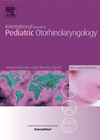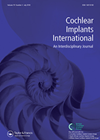
Journal Reviews
How young is too young for tympanoplasty?
This paper presents the largest series of pre-school age children undergoing tympanoplasty compared with older children. The authors have collected much prospective data on 259 children undergoing 284 surgeries so were able to perform multivariate analysis. The age groupings of...
How can we assess children with complex needs?
In the early days of cochlear implantation, children with additional disorders were being excluded as poor candidates whereas today a large number of children with complex needs are being referred for cochlear implant assessment. However, the related problems include difficulties...







